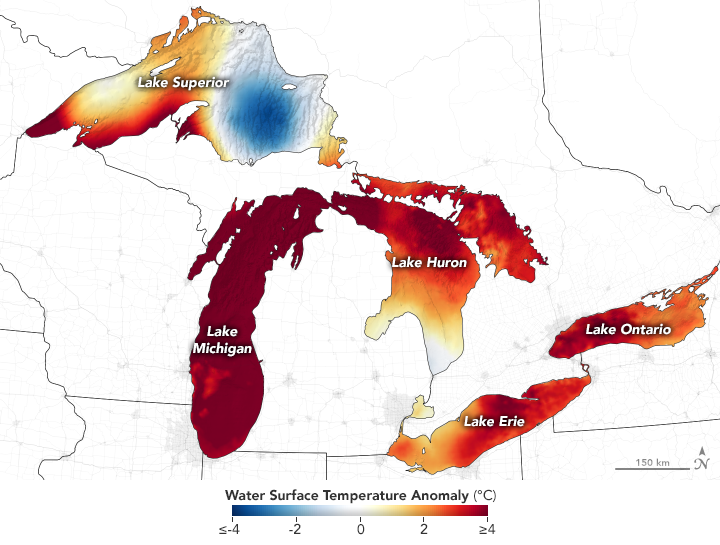NASA Earth Observatory - Great Lakes 6-10F Hotter Than Normal For Early July

When the usually chilly Great Lakes feel like bath water, you know it has been a warm summer. When the water is that warm at the beginning of July, you know that some records are in jeopardy.
Just a few months after an unusually warm winter left the Great Lakes mostly free of winter ice, the surface temperatures of the lakes are now near or above records for this time of year. Late June and early July brought several weeks of persistent high atmospheric pressure, clear skies, hot air temperatures, and light winds, allowing surface waters to warm significantly in the summer sunlight.
The map above shows water surface temperature anomalies for July 9, 2020; that is, how much the surface layer of each lake was above or below the long-term average temperature (2003-14) for this time of year. The data come from the Multiscale Ultrahigh Resolution Sea Surface Temperature (MUR SST) project, based at NASA’s Jet Propulsion Laboratory. MUR SST blends measurements of sea surface temperatures from multiple NASA, NOAA, and international satellites, as well as ship and buoy observations.
According to the map above and NOAA reports, surface temperatures are 6° to 10° Fahrenheit (3° to 5° Celsius) above normal for early July. The average lake water temperature across all of Lake Erie—the shallowest lake—was 74.29°F on July 15; it was 59.83°F across Lake Superior, the largest lake. On the weekend of July 10-12, water temperatures for beachgoers in the shallower coastal areas of Lake Michigan, Huron, Erie, and Ontario ranged from 75°F to 85°F. The only area below normal was the eastern portion of Lake Superior.
EDIT
https://earthobservatory.nasa.gov/images/146968/great-warm-lakes?utm_source=card_2&utm_medium=direct&utm_campaign=home
